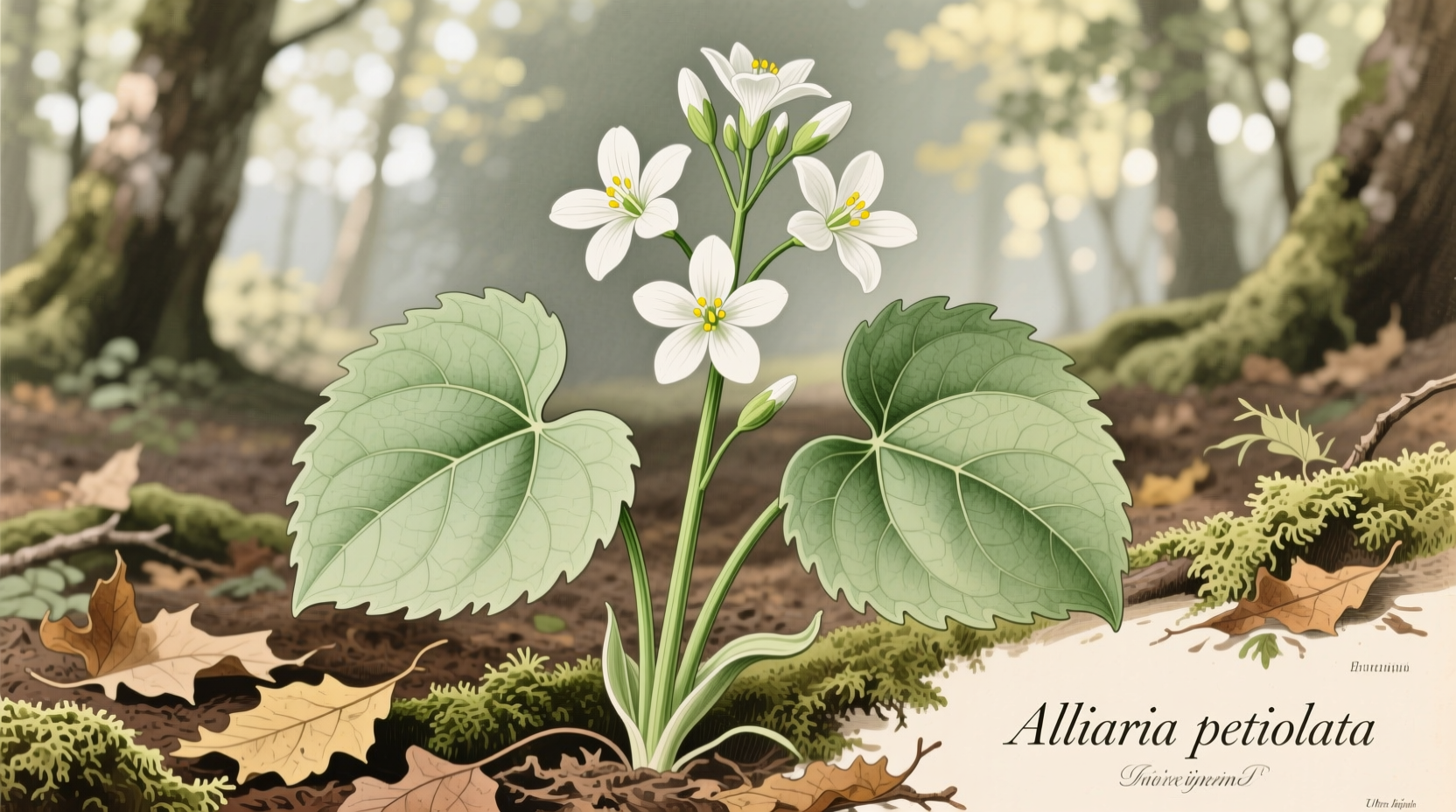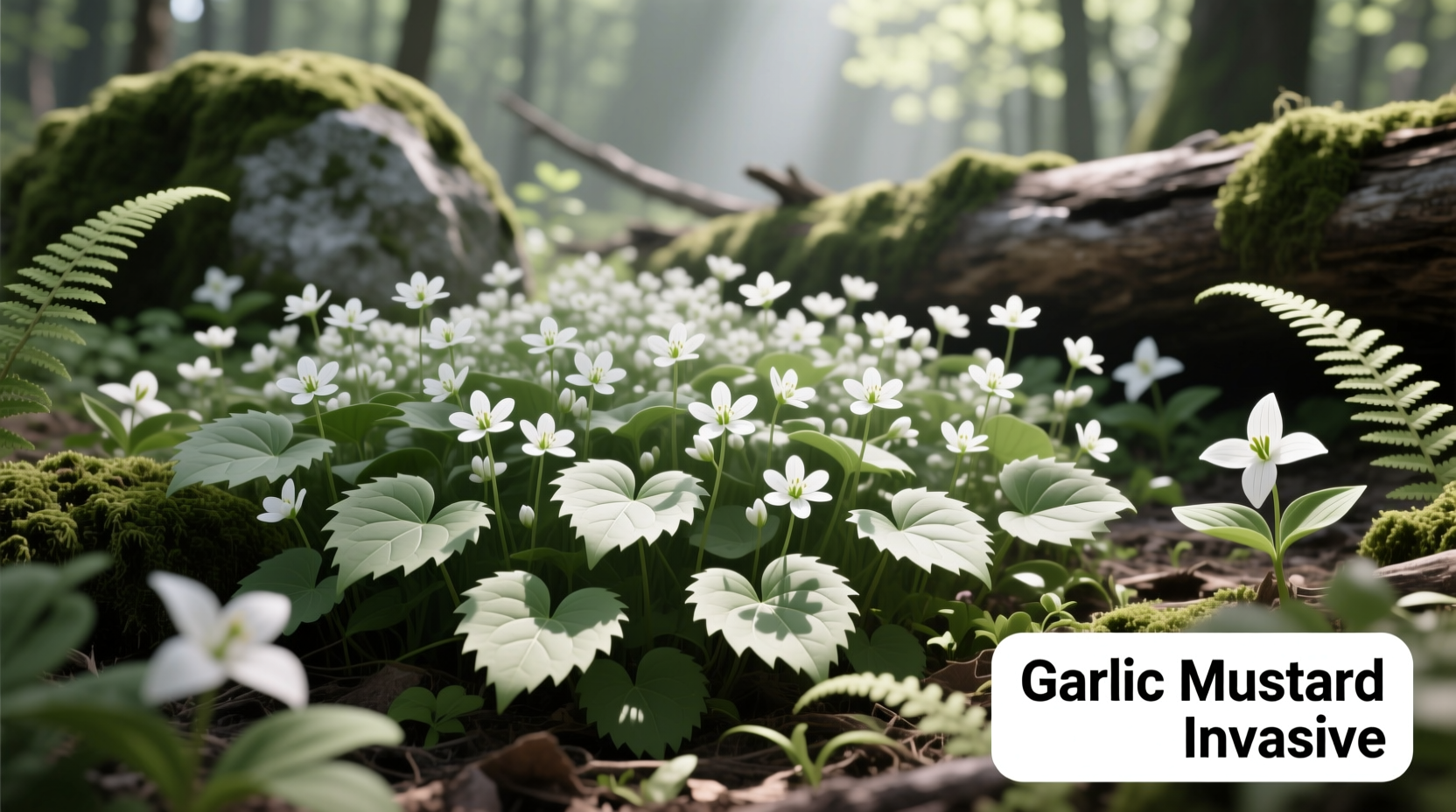Garlic mustard (Alliaria petiolata) is a highly invasive biennial plant native to Europe that has spread aggressively throughout North America, displacing native vegetation and altering forest ecosystems through its allelopathic chemicals. It's considered a Tier 1 invasive species by multiple state agencies due to its rapid spread and significant ecological damage.
Why Garlic Mustard Poses a Serious Ecological Threat
Unlike many invasive species that struggle outside their native range, garlic mustard thrives in North American forests due to three critical advantages:
- Chemical warfare - Releases allelopathic compounds that inhibit mycorrhizal fungi essential for native tree seedlings
- High reproductive capacity - A single plant can produce 600-7,900 seeds that remain viable for 5-7 years
- Lack of natural predators - Few North American insects or animals consume it due to its pungent mustard oils
According to the National Park Service, garlic mustard has invaded over 30 states and 10 Canadian provinces, with particularly severe infestations in the Midwest and Northeast. Its spread correlates directly with declining populations of native spring ephemerals like trilliums and bloodroot.
Accurate Identification: Spotting Garlic Mustard Through the Seasons
Correct identification is crucial since garlic mustard has several edible look-alikes. The distinctive garlic odor when crushed provides the most reliable field test, but seasonal characteristics vary significantly:
| Season | First-Year Plant | Second-Year Plant |
|---|---|---|
| Spring | Rosette of kidney-shaped leaves with scalloped edges | Flowering stalk 2-4 ft tall with white flowers |
| Summer | Green rosette persists | Seeds developing in erect pods; leaves become triangular |
| Fall | New rosette forms | Dead stalks with seed pods remain visible |

Documented Spread Timeline: How an Innocent Import Became an Ecological Crisis
Understanding garlic mustard's invasion history reveals why it's so difficult to control. This timeline shows its progression from introduction to ecological crisis:
- 1868 - First recorded introduction to Long Island, NY as a culinary herb
- 1900s - Spread to forests throughout the Northeast
- 1950s - Documented in Midwest forests
- 1990s - Recognized as a major threat by conservation agencies
- 2000s - Spread to Pacific Northwest and Canada
- Present - Established in 34 U.S. states and 10 Canadian provinces
Research from Rutgers University shows garlic mustard spreads at an average rate of 6,500 square meters per year per introduction site, making early detection critical for effective management.
Proven Control Methods: What Actually Works Against Garlic Mustard
Effective garlic mustard management requires understanding its life cycle and employing the right technique at the optimal time. Here's what scientific research shows works best:
Manual Removal Techniques
Hand-pulling remains the most accessible method for homeowners and small landowners, but timing is critical:
- Early spring (April-May) - Pull second-year plants before flowering (wear gloves to avoid staining)
- Late spring (May-June) - Cut flowering stalks at soil level to prevent seed production
- Fall (September-October) - Remove first-year rosettes before winter dormancy
A Michigan State University study demonstrated that consistent removal over 3-5 years reduces populations by 90% when conducted before seed set.
Chemical Control Options
For larger infestations, targeted herbicide application may be necessary:
- Fall application - 1-2% glyphosate solution on rosettes (most effective when temperatures stay above 50°F for 48 hours)
- Spring application - Before native plants emerge (use extreme caution near water sources)
- Always follow label instructions - Never apply during flowering to protect pollinators
Biological Control Research
Scientists are testing two European weevils (Ceutorhynchus scrobicollis and C. constrictus) as potential biological controls. The USDA's Animal and Plant Health Inspection Service reports promising results in field trials, though widespread implementation remains several years away.
Important Context Boundaries: When Management Approaches Fail
Not all garlic mustard infestations respond equally to management efforts. Understanding these limitations prevents wasted effort:
- Large seed banks - Areas with established populations require 5+ years of consistent management
- Steep terrain - Manual removal becomes impractical and potentially erosive on slopes over 15%
- Wetland areas - Many herbicides are prohibited near water sources
- High deer populations - Deer avoid eating garlic mustard but consume native competitors, accelerating its spread
Post-Removal Restoration: Reclaiming Your Land
Simply removing garlic mustard isn't enough - you must actively restore the ecosystem to prevent reinfestation:
- Immediately plant competitive native species like Virginia bluebells or wild ginger
- Apply 2-3 inches of hardwood mulch to suppress remaining seeds
- Monitor monthly during growing season for new seedlings
- Continue management for 5-7 years to exhaust the seed bank
The USDA Plants Database recommends establishing a diverse native plant community as the most effective long-term defense against garlic mustard reinfestation.











 浙公网安备
33010002000092号
浙公网安备
33010002000092号 浙B2-20120091-4
浙B2-20120091-4